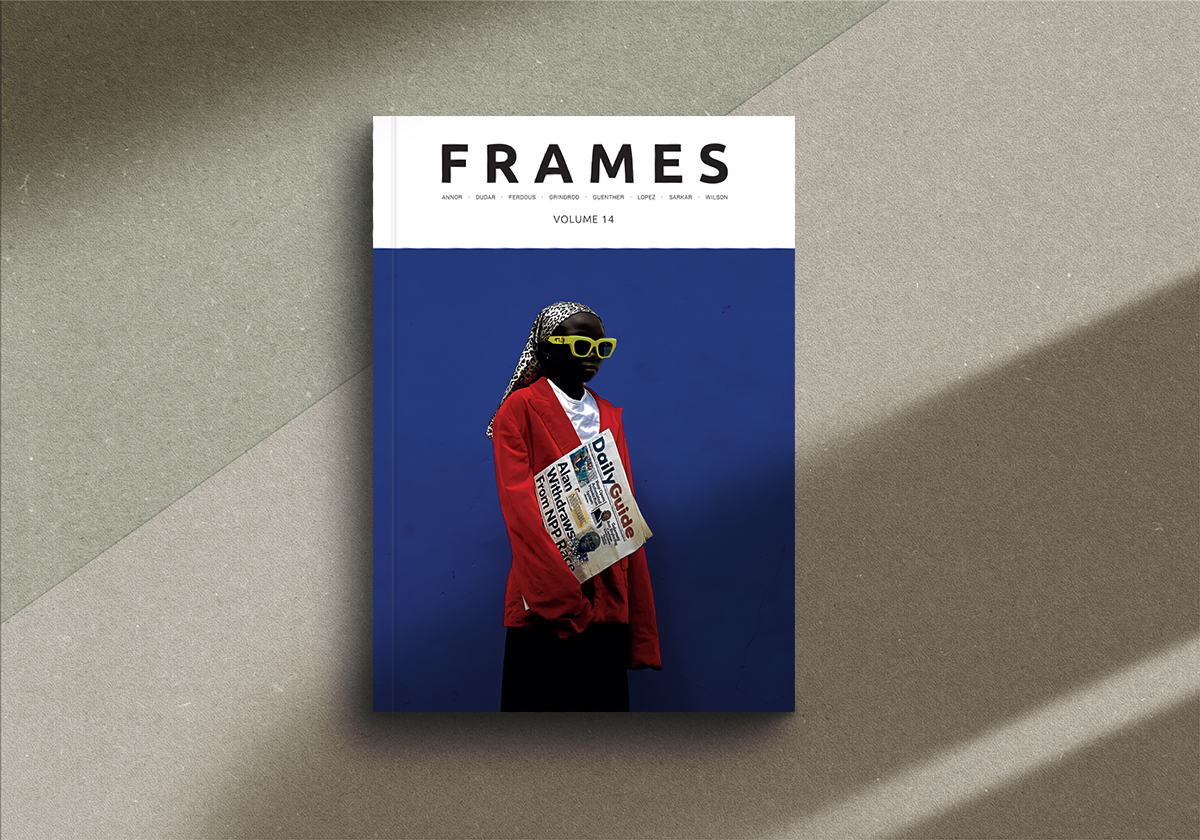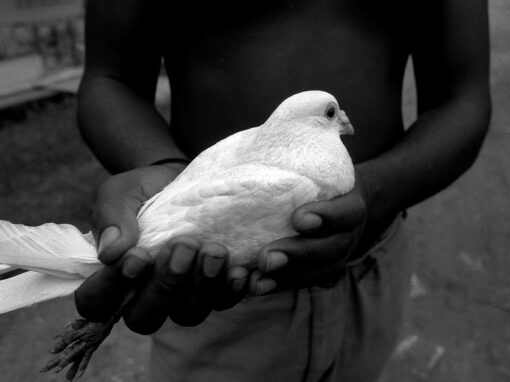«Just so we get this straight from the beginning, I am not a disciple of or believer in analog photography. Rather it is just my way to work. I am an artist. Analog photography is simply my craft, my handiwork. And with this handiwork I achieve the artistic results that I envision. I use digital photography for other things, documentation, bookmaking, social media, etc., but my personal art is done exclusively with analog techniques.”
I am talking to Guido Baselgia at his striking, modern home, atelier and darkroom in the canton of Grisons, Switzerland during a major exhibition of his life’s work at the Kunsthaus Zug, in central Switzerland. The retrospective spanned almost forty years of his artistic activity and parted the curtain to the growth and transformation of his perception and inner vision.
The exhibition begins with a remarkable series of documentary photos of eastern Galicia, a forgotten and isolated part of what is today western Ukraine. He traveled there and to other parts of Eastern Europe between 1986 and 1990, documenting these years of upheaval, and was often, immediately following the fall of the Iron Curtain, one of the first Westerners these people had ever encountered. The photographs, taken with a 35-millimeter camera, are magnetic. People on the streets and in their homes, farmers, and workers who had been isolated in the Soviet bloc for decades peer proudly, yet tentatively, into the lens of the stranger from the forbidden West. The printing is a technical tour-de-force. The sharpness and the palette of greys, the shadow detail, make them practically leap off the paper.

After the collapse of the Soviet Union, people formed in Lviv to demonstrate for an independent Western Ukraine. It is easy to see that their faces reflect the multi-ethnic state that characterized coexistence in the former Kingdom of Galizia.
“The reportage project in Galicia was a turning point for me,” Baselgia says, “just as that time was a turning point for Eastern Europe. The dissolution of the Soviet Union and the sea change it brought, meant a new begin for me as well. I moved my personal work from small format reportage of East bloc Europe to middle and, especially, large format photography, mainly centered in Western Europe.”
As a professional photographer with clients who wanted results ever faster, he always stayed up to date with the newest developments in digital photography, digitalizing images in the early 90s onto gold CDs to test the promise of archiving for eternity — but which can’t be read anymore today. Or working with the Phase One digital backs for Hasselblads when they came out, the first ones having a whopping 16 megapixels! Imagine that!
But the silver gelatin print from a negative still possesses for him a quality that can’t be matched. It’s hard to describe, but it is what elicits the responses he gets from visitors at his exhibits. There is something about these prints that touches emotions in a way that digital inkjet printing can’t.
And although he has used all the techniques available to photographers in the last decades, film and silver gelatin printing remain his personal form of image creation.

And surely not because of any ease of use or because he knows the process so well. To the contrary, as he argues, the use of film takes an enormous amount of energy, time and skill to achieve the results that one envisions. The use of digital cameras and processing is many times easier. With film every step of the process is in his hands to control and perfect, with only himself to praise or blame for the results.
“But,” as he explains, “beyond the idea of control, there is another aspect that is even more essential to me. First, I load the film with great care in a film cassette. Then, I travel to a location, perhaps halfway around the globe. Then, I expose a film. The image is there already but invisible. I continue traveling perhaps for weeks and return home, bringing exposed films. But I don’t know exactly what is on them. I have memories of the moment I exposed it, but I don’t know if my memory and the image really overlap. I develop it and see on the light box that it is properly exposed. I make a print of it. There is a continuum from start to finish.
“And for me, the concept of this latent image is a magical phenomenon. I have an exposed film that a chemical process helps to transform from latent to visible. The silver halides, transformed through their being touched by light, use the developer to help them become metallic silver and black. Light becomes dark on the negative and when I reverse the process by printing the negative on paper, it is the spaces between the halides that become black and produce a positive image.
“Is it really so that what we photographed is, in fact, what we actually saw?

“Then there is the phenomenon of time. Between the moment I expose the film and the moment I see the positive image, perhaps a day has passed, perhaps a month, a year, five years. And in that time, we change, our world changes, and our memory of the moment of the capturing of the image changes. Both halves of the process are intense and, for me, important for the result — the preparation and capturing of the image and the period of the image’s latency and its evolution.”
This is illustrated in his series of landscapes using the Sabatier Effect. In these images, the line is blurred between the captured image and the finished print. The transformation is interrupted. Is this negative? Positive? The memory of the image? Or the image itself. “That is the core of analog photography for me. Photography ‘out of control’,” he says. “The silver in the emulsion is using light to its own end and for its own purposes.”

Baselgia has concentrated on nature and landscape photography to pursue his vision, traveling to South America and throughout Europe from Norway to Italy, turning sweeping alpine and desert vistas and close-cropped details into minimalistic abstractions or capturing time itself with day-long exposures of the sun’s path, or pilgriming to the arctic north to photograph the sun’s first, tentative peek over the horizon after the long winter’s night.

I wonder if he regrets the loss of photographic skill and handicraft in the digital age. “No, that doesn’t bother me. In my view, digital photography is simply another medium. Unfortunately, we share the same name — photography — but there’s not much else that we share. I work with natural elements and chemical processes. Digital photographers work with electronic particles. And my artisanship, and that of yours and all other analog photographer’s, is intact.”
In recent years he began leaving the high precision and resolution of the large format view camera, instead experimenting with a giant, room-sized camera obscura — constructed in a converted salt storage silo on the Bernina Pass in the Alps through his personal initiative — which is flooded with the image of the opposing mountains through a half-inch hole (www.camera-obscura.ch).
With his most recent work, Baselgia has turned to color — a further facet of analog photography that has his attention at the moment. Using a self-constructed camera obscura pointed at landscapes; he captured not the details but the moods, the colors of light, and nature reflected back to him as if viewing them through your mind’s eye.

Photography has been his life. However, he is still searching, pursuing his vision, and trying to “turn the gears” of film and analog techniques forward, cog by cog, to find a new aspect that hasn’t been exploited, new uses that haven’t yet been discovered.
Contrary to his initial statement, I strongly sense a dedicated and passionate disciple of his art and his medium of analog photography.

GUIDO BASELGIA
ABOUT THE AUTHOR
Stephen Smith is a professional choral and orchestral conductor and an amateur photographer and linguist. His photographic interests are in analog medium and large formats. Born and raised in the USA, he has lived as a dual-national in Switzerland for 40 years.





